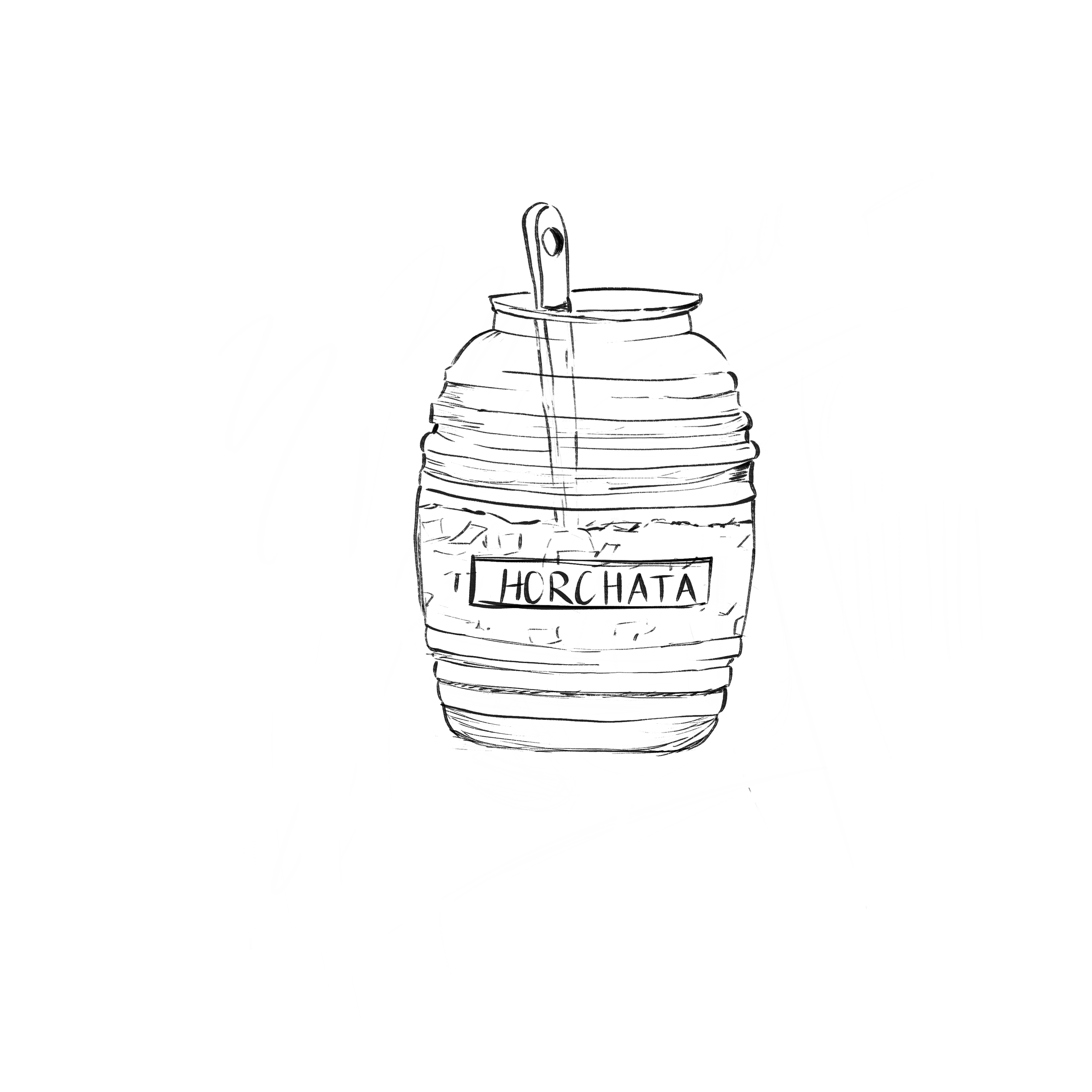The Baja California Issue
What We Leave Behind
How to Drive 16 People to Mexico (With Pictures)
I hate my life.
My heart is in my throat, it’s 6:00 a.m., I overslept. I’m driving 16 people to Mexico in T-minus 30 minutes. Well, technically only three. But I’m partially responsible for 16 people arriving safely in Tijuana 24 hours from now. You get the concept.
There’s no amount of preparation that will prevent the crippling anxiety screaming at you every possible scenario that could occur on your watch. You just have to tune it out, put on your sweatpants, and get in the car. What’s the worst that could happen?
There’s just something about bringing 16 people (many of whom have never been to Mexico) across an international border, on a semi-planned trip, that feels like a recipe for disaster. But I digress.
I push my screeching voice of reason to the side and pick up Shayla, then Sasha, and finally Eden. The drive down is uneventful. It’s our last trip with the club that brought us together, but we ignore that somber detail and enjoy each other’s company.
My blue Prius shoots down the I-5 dutifully, her “Maintenance Required” light crying out for attention. Don’t worry guys, I say with undue confidence. That light is always on!
We make it to Orange County to exchange cars, and finally, 14 hours after leaving Berkeley, we arrive in San Diego.
The rest of our team trickles into the Urbina residence at 2:00 a.m., our home for the night, after resolving a horrific rental car fiasco. I’m comfortably nestled between Shayla and Eden on the living room floor. Life is good for now.
6:00 a.m. again. Emily is patting my head urgently.
“We have a problem.”
My least favorite words to wake up to.
Apparently, our hours of research on crossing the border missed one crucial detail: You must be the registered owner of any vehicle you drive to Mexico. We borrowed two of the four cars we needed to bring our team to Tijuana. Hence, we’re not the owners. Hence, we’re now missing two cars.
A long list of expletives exit my mouth before we regroup and discuss our options. Our perpetual saving grace, the Urbina family, is the hero once again. They’ll let us borrow their minivan. We have enough seats for everyone.
I disregard the horrific layer of responsibility added to our crew’s conscience; this family is trusting 16 twenty-something year olds to drive their giant car to Mexico.
Somehow, someway, we make it to Rosarito with no further hitches. The anvil on my chest evaporates into nothingness. We actually fucking made it.
The blur of the excruciating past 24 hours fades into memory, and I feel reinvigorated. We make it to the Airbnb to drop off our stuff, marveling at the scenery around us. The recent rain storms painted the Tijuana hills with every shade of green imaginable, and wildflowers dot the land in droves. We came at the perfect time.
The rest of the trip gives us very little trouble, which is a relief. We move through the colorful Mercado Hidalgo, sampling chili covered mango slices and horchata. Downtown Tijuana feels alive with street sellers and shoe shiners jockeying for our attention. My body is awash with the rewarding feeling of watching our new members soak up the atmosphere. We did this.
We end our first day in Mexico with a glorious sunset on Rosarito Beach. I’m on a quest to find a Modelo. I want my beer-on-the-beach moment. Sue me.
As it turns out, that’s a relatively easy goal to accomplish. Modelo in hand, we stroll back down the beach towards our Airbnb to have dinner and go to bed.
The next morning, the house awakens slowly. Everyone relishes their much-needed sleep after two days of constant movement. I’m eager to get moving; we have a great day ahead of us.
Our first stop is the Urbina family winery in Baja’s wine region, the Valle de Guadalupe. Once again, the Urbina family provides. I consider buying them a bottle of wine as a thank you but realize that would be sort of redundant. They literally own an artisanal winery.
The Tijuana hills were beautiful, but the Valle de Guadalupe is on another level. The earth is soaked with last night’s rain and practically glowing orange and yellow, the cliff faces begging to be photographed.
We arrive at Casa Urbina Wine Resort with our jaws agape. The winery is tastefully designed in a circular pattern so that from above, it resembles the sun. We explore the grounds before settling down to stuff ourselves with wine, freshly made carne asada, and grilled cactus tacos. Thanks again, Urbina family.
My car team tears itself away from the dining table to rush to our next location. It rained the entirety of our meal, but now the sun peeks out. Our good fortune continues.
We spend the rest of the afternoon enjoying the city of Ensenada. The tourist-crazed cruise ship port quickly drives us inland toward downtown. We make a stop at the Garden of Tara, a quiet corner of Ensenada where an enormous statue of the Buddhist Princess Tara overlooks the city.
The sculpture was given to the city of Ensenada by the Nepali Institute of International and Cultural Exchange in 1994. We find a nice respite in the garden from the bustle of the city below.
From above, Ensenada looks like it could be any city in Southern California. Gridlike streets lined with buildings and houses that don’t rise more than two stories, sunsoaked roofs and cars driving far too fast in residential areas. The ocean glittering in the distance.
Three years ago, I stood beside Apple admiring the view of Los Angeles from Griffith Observatory. Now I stand beside her, only 200 miles from that spot, and for a moment, it almost feels like we could be there. Apple is like a mirror; reflective, honest. A reminder of much time spent together. I cherish this about our friendship.
We admire the view for a while before moving to our final stop — “Zona Centro.” We find the entire city center closed down for the festivities of Carnaval. We walk through blocks and blocks of rides, games, and street music, trying to stay together through the crowds. A friendly clown on stilts pauses to have his photo taken. Some of our cohort stops to get strawberries and cream from a street vendor. We stick out like sore thumbs, and the rushing rivers of people part around us awkwardly as we stand in the street to soak it all in.
Finally, the sun begins to set. We bid the rainbow streets of Ensenada goodbye and head home to Rosarito. I have a pensive conversation with Apple while the backseat of my car dozes off. I’ll miss this.
The next morning, we wake up at 4:00 a.m. to pack and cross the border. We have a grueling day ahead of us. We make it back into the United States without any issues and finish the car swaps that brought us so much grief two days prior.
Finally, the home stretch. There’s no pretending anymore. I’m in the twilight of my last Caravan trip ever. The rush of the weekend has passed, and I’m filled with a bittersweet feeling. We did it, and now it’s over.
In the end, I’m filled with the same pride I always am when we finish these trips. David Chen said something that really stuck with me: “Art is all we leave behind,” or something to that effect. If you want to learn about someone after they’ve passed, even if that means they’ve just moved on to their next phase in life, you’d start with their art.
I’m proud to have this magazine to leave behind. Caravan is the only club I ever joined at Berkeley. It’s hard to imagine my life without its crucible of creativity.
I drop off my weary crew at their respective houses before heading home myself. My entire body hurts, and I am exhausted. I haven’t slept properly in days. For a moment, I think to myself I won’t miss this part.
But that’s a lie. I know I will.
Words: Niko Frost
Photos: Eden Porras Harth, Niko Frost, Shayla Madha
Design: Hannah Zhuang







